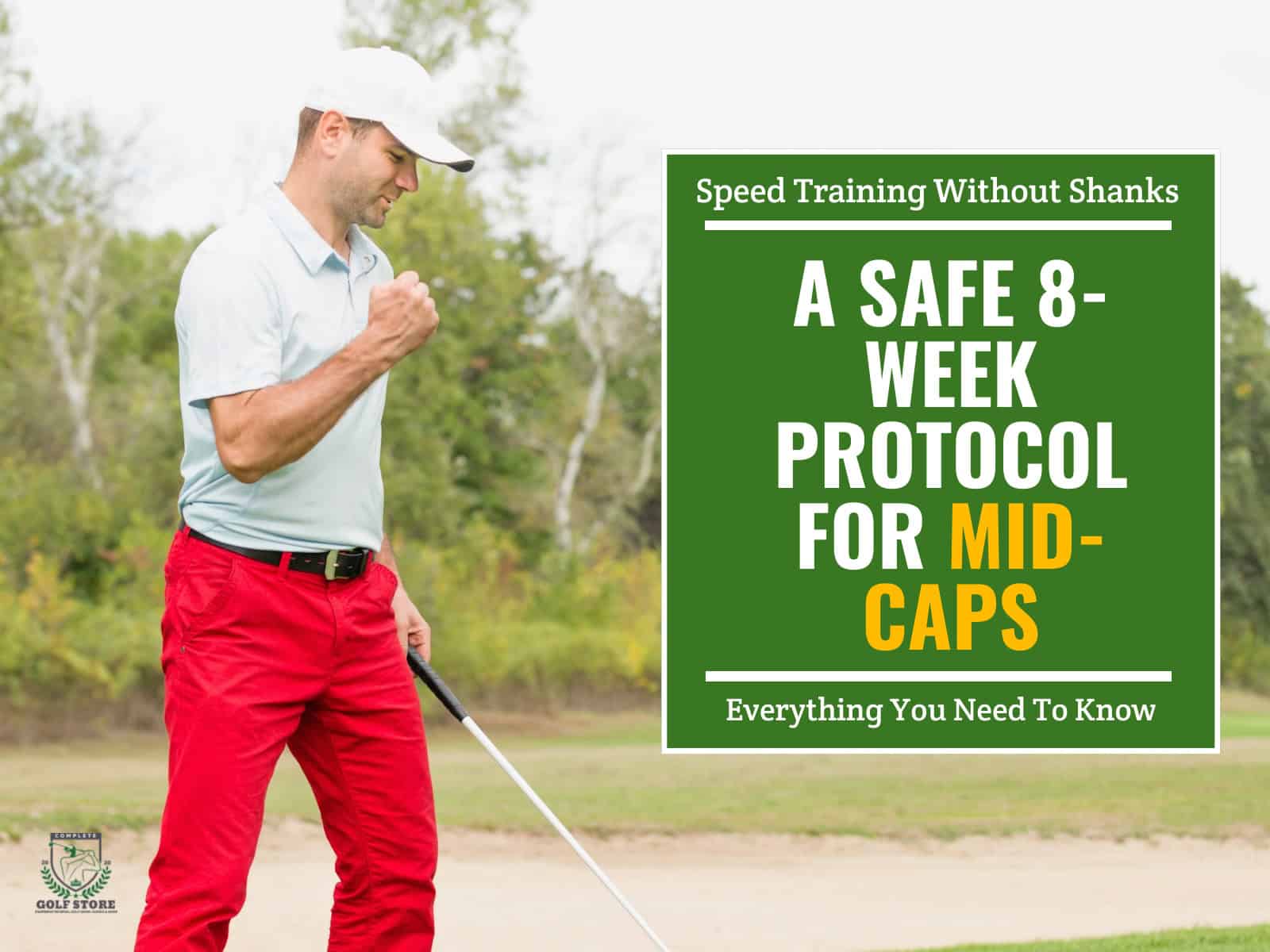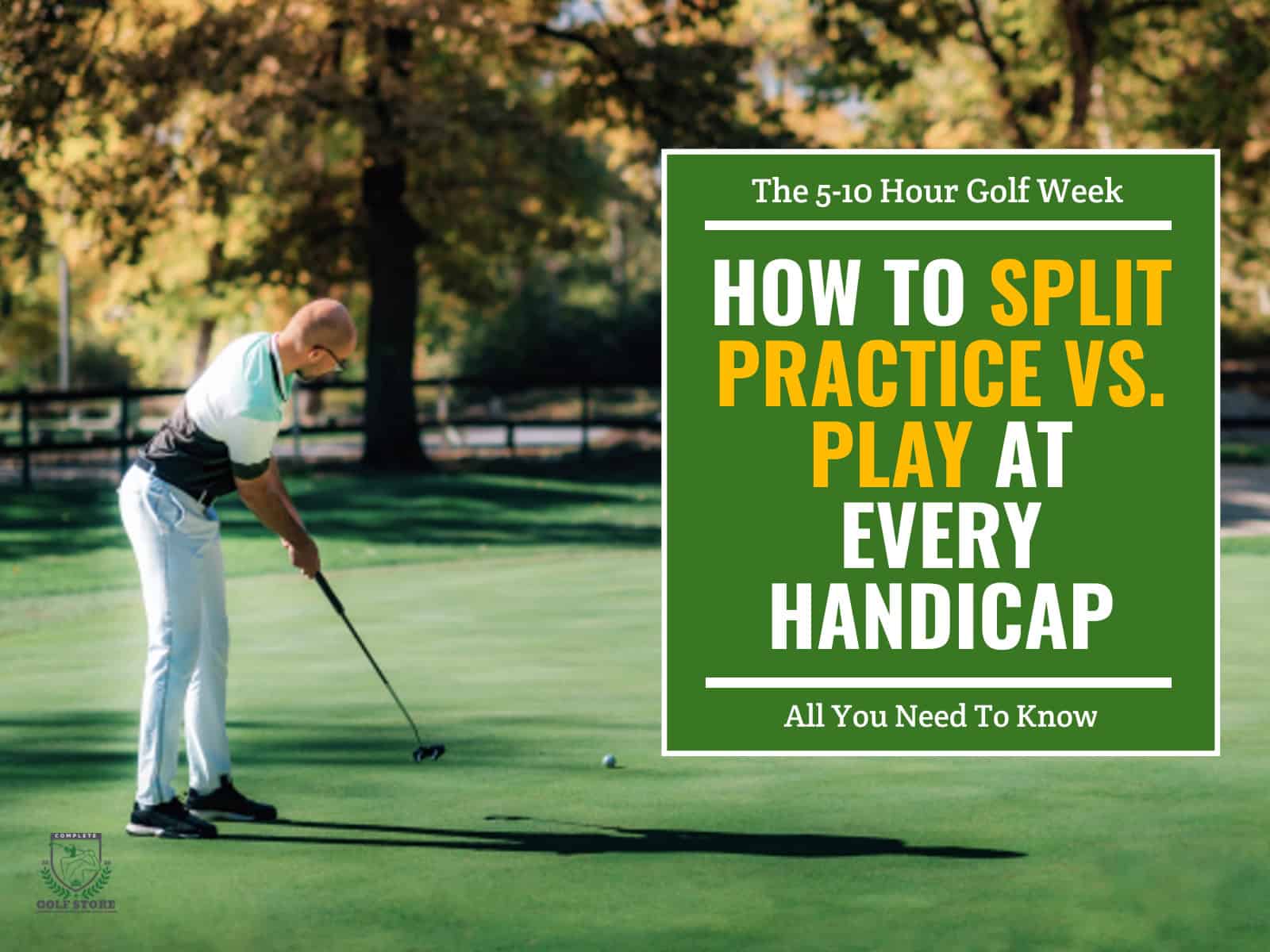Proper alignment is a critical fundamental for consistent success on the course. Many amateur golfers make the mistake of aiming their body directly at the target instead of parallel to the target line. It’s like trying to drive a car while sitting sideways – it just doesn’t work!
Our guide will arm you with the knowledge and techniques to perfect your alignment. You’ll learn the key elements of proper setup, common mistakes to avoid and practical tips for both the driving range and the course. By the end, you’ll be hitting straighter, more consistent shots and playing with renewed confidence.
- 1) Understanding Proper Golf Alignment
- 2) How to Practice Proper Alignment?
- 3) Key Elements of Proper Alignment
- 4) Troubleshooting Common Faults
-
5)
Frequently Asked Questions
- 5.1) How does poor alignment affect the golf swing and shot outcome?
- 5.2) What drills can I use to practice proper golf alignment?
- 5.3) How often should I practice my alignment in golf?
- 5.4) What role does alignment play in different types of golf shots?
- 5.5) Can poor eyesight affect my alignment in golf?
- 6) Final Thoughts
Understanding Proper Golf Alignment
To visualize proper golf alignment, picture a set of railroad tracks. The target shot line, where the ball sits with the clubface square behind it, represents one track pointing directly to your target. Your body line, formed by your toes, knees, hips, and shoulders, is the other track that should run parallel to the target shot line.
Key points to remember include the following:
- The clubface should be square to the ball-to-target line at address
- Your body line should be parallel left of the target line (for right-handed golfers)
- Keep your knees, hips and shoulders in line with your feet
Common Alignment Mistakes
One of the most frequent mistakes amateur golfers make is aiming their body directly at the target instead of parallel to the target line. This error causes the clubface to point too far right of the target for right-handed players, or too far left for left-handers, leading to inaccurate shots.
Another common fault is having an open or closed stance. To check your stance, place a club along your toe line, and then step back and observe where the club points – It should point parallel left of the target for a square stance. If it points directly at or right of the target, your stance is closed; if it points significantly left of the target, your stance is open
How to Practice Proper Alignment?
Practicing proper alignment is crucial for developing a consistent and accurate golf swing. Incorporating alignment drills into your practice routine will help ingrain the correct positions and improve your performance on the course.
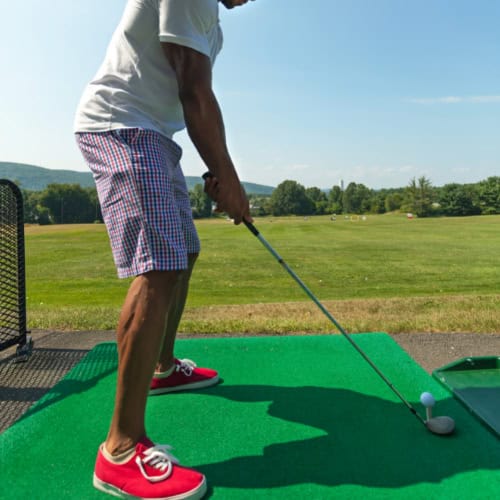
Driving Range Drills
The driving range is the perfect place to work on your alignment. Use these simple drills to create a solid foundation:
Alignment Stick Station
Place one golf alignment stick on the ground, pointing directly at your target, and lay another stick parallel to the first, creating a visual reference for your body line. Practice setting up with your feet, knees, hips, and shoulders parallel to the second stick.
For a more detailed guide on utilizing alignment aids for a better backswing, check out our article on how to use alignment sticks to improve your takeaway.
Regular Alignment Checks
Throughout your practice session, periodically check your alignment – Step back from your setup and verify that your body line is parallel to your target line; this habit ensures you’re consistently training the correct positions.
On-Course Alignment Tips
Maintaining proper alignment on the course can be challenging, especially with various lies and obstacles to consider. Use these tips to stay on track:
- Begin Behind the Ball – Start your pre-shot routine behind the ball, facing your target, visualize your target shot line and pick an intermediate target for reference.
- Align Clubface First – Approach the ball and align your clubface square to the target line. Once set, align your body parallel to the imaginary target line.
- Utilize Intermediate Targets – Choose a spot a few feet in front of your ball that lies on your target line, then align your body parallel to the line connecting the ball and the intermediate target. This technique helps maintain proper alignment and avoid getting distracted by distant targets.
Key Elements of Proper Alignment
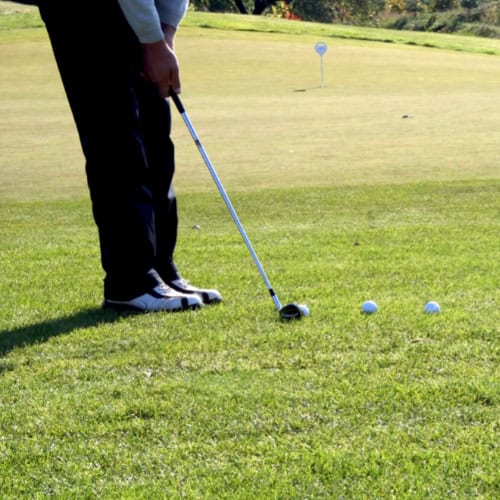
To achieve consistent, accurate shots, you must focus on three key elements of proper alignment: clubface alignment, body alignment and shoulder alignment.
Aiming the Clubface
The first step in proper alignment is ensuring your clubface is aimed directly down your target line. This is critical because the clubface direction at impact largely determines the initial direction of the ball.
Aligning Your Feet
Once your clubface is set, align your feet parallel to the target line. This is where the railroad track analogy comes into play. Your feet, knees, hips, and shoulders should form a line that runs parallel to your target line, like a second rail on a railroad track.
Squaring Your Shoulders
With your clubface and feet aligned, the final step is to ensure your shoulders are square or slightly open to the target line. Many golfers inadvertently set their shoulders closed (pointing right of the target for right-handed golfers), causing an outside-in swing path and slices.
To square your shoulders:
- Imagine a line running across your shoulders
- Ensure this line is parallel to your feet and target line
- Feel a slight tilt in your shoulders, with your trail shoulder lower than your lead shoulder
By focusing on these three key elements—clubface, feet and shoulders—you’ll create a solid foundation for a repeatable, powerful swing.
Once you’ve established proper alignment, it’s crucial to focus on executing a smooth backswing. For more information, check out our guide on tips for a perfect golf backswing.
Alignment vs. Aiming
It’s important to understand the distinction between alignment and aiming in golf. Alignment refers to the positioning of your body relative to the target line, which influences your swing path. Aiming, on the other hand, is the act of setting your clubface direction, which primarily dictates the initial direction of the ball.
While alignment and aiming are separate concepts, they work together to create accurate shots. Proper alignment sets the stage for a swing path that matches your clubface direction, resulting in straighter, more consistent ball flight.
Equipment Considerations

Properly fitted clubs can promote better alignment by ensuring that your clubface is square to the target line at address. When your clubs are the correct length, lie angle and shaft flex for your swing, it’s easier to achieve and maintain proper alignment throughout your shot.
Similarly, choosing the right golf ball for your game can help optimize your trajectory and alignment. Different golf balls have varying spin rates, launch angles and compression ratings, which can affect how they interact with your clubface and the turf. By selecting a ball that complements your swing speed and shot shape tendencies, you can promote straighter, more consistent shots that start on your intended target line.
The Mental Game
Before taking your stance, take a moment to visualize your desired shot shape and trajectory. This mental rehearsal can help you commit to your target line and align your body accordingly. As you set up to the ball, make a habit of checking your alignment from behind the ball, ensuring that your feet, hips, and shoulders are parallel to your target line.
Another key mental game strategy is to focus on the process, not the outcome. Instead of getting caught up in your score or the result of each shot, concentrate on executing your pre-shot routine, maintaining proper alignment and making a smooth, confident swing. By staying present and focusing on the factors within your control, you’ll be better equipped to handle the challenges and pressures of the game.
Troubleshooting Common Faults
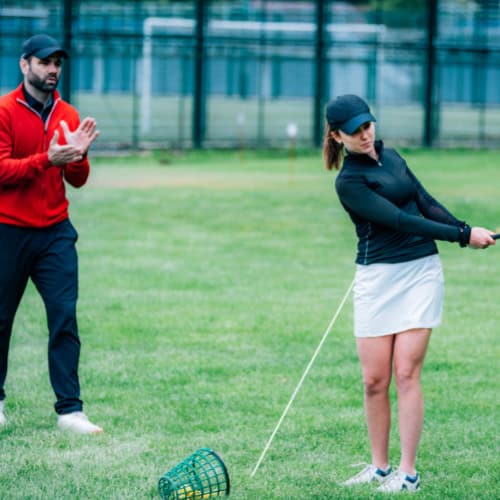
Even with a solid understanding of proper alignment fundamentals, you may still encounter common faults that hinder your performance. By identifying and addressing these issues, you can keep your alignment on track and your swing in top form.
Misaligned Shoulders
One of the most prevalent alignment faults is misaligned shoulders. When your shoulders are not square or slightly open to your target line, it can cause an outside-in or inside-out swing path, leading to slices or hooks.
To fix misaligned shoulders, practice setting up with a mirror or alignment sticks, feel the proper shoulder tilt at address (trail shoulder slightly lower than lead shoulder) and check your shoulder alignment regularly during practice sessions.
Incorrect Ball Position
Another common fault is incorrect ball position. If the ball is too far forward or back in your stance, it can affect your alignment and swing path.
To correct ball position, use the club’s length to determine the proper ball position – For shorter clubs (wedges), the ball should be placed in the center of your stance.
For mid irons, place the ball slightly forward of the center, and for long irons and woods, it is recommended to place the ball forward, inside your lead heel.
Lack of Practice
Perhaps the most significant factor contributing to alignment faults is a lack of consistent practice. Golfers who don’t regularly work on their alignment may develop bad habits that are difficult to break.
In order to make alignment practice a priority, you can dedicate a portion of each practice session to alignment drills, use training aids like alignment sticks or mirrors and practice alignment on the course during rounds, not just at the driving range.
Frequently Asked Questions
In this section of the article, we answered some commonly asked questions related to alignment in golf so as to help you learn as much as possible about this crucial aspect of the game.
How does poor alignment affect the golf swing and shot outcome?
When your body is misaligned, it can cause your swing path to deviate from the target line, resulting in shots that start left or right of your intended target.
Misalignment can also lead to compensations in your swing, as your body subconsciously tries to adjust to the misaligned setup. These compensations can cause inconsistent ball striking, loss of power and increased risk of injury.
What drills can I use to practice proper golf alignment?
There are several effective drills you can use to practice proper alignment; here are some examples:
– Alignment Stick Drill: Place one alignment stick on the ground pointing towards your target, and another stick parallel to the first, just outside your feet. Practice setting up with your feet, knees, hips, and shoulders parallel to the second stick.
– Foot Line Drill: Use a club or alignment stick to create a straight line just outside your feet at address. Step back and check that your feet are parallel to the line, then step back into your stance and hit shots.
– Mirror Drill: Practice your alignment in front of a full-length mirror. Set up to the ball and check that your body is parallel to the target line and your clubface is square to the target.
How often should I practice my alignment in golf?
Practicing your alignment should be a regular part of your golf training routine. Ideally, you should dedicate a portion of every practice session to working on your alignment, even if it’s just for a few minutes.
The more frequently you practice, the more natural and automatic your alignment will become on the course.
What role does alignment play in different types of golf shots?
Proper alignment is crucial for all types of shots, from drives to putts. However, the specific alignment techniques may vary slightly depending on the shot you’re attempting.
For example, when hitting a driver, you may want to align your body slightly left of your target line to promote an in-to-out swing path and encourage a draw. When putting, your alignment should be more focused on the clubface direction, ensuring that it is perpendicular to your intended putting line.
Regardless of the shot type, consistently aligning your body and clubface is essential for accuracy and distance control.
Can poor eyesight affect my alignment in golf?
Yes, poor eyesight can make it more challenging to align yourself correctly on the course. If you have difficulty seeing your target clearly or struggle to perceive the slope and contours of the green, it can be harder to establish an accurate target line and align your body accordingly.
If you suspect that your eyesight is impacting your alignment, consider getting an eye exam and discussing your concerns with an optometrist or ophthalmologist. Corrective lenses or specialized golf glasses may help improve your visual acuity and depth perception on the course.
We invite you to read our full reviews of Golf Prescription Glasses and Golf Sunglasses to see which option(s) can help enhance visibility on the course or range.
Final Thoughts
Throughout this guide, we’ve explored practical tips and drills for improving your alignment on the range and course. Focusing on the three key elements of alignment—clubface, feet and shoulders—and making alignment practice a regular part of your training will help develop a reliable, repeatable swing.
Remember, improving alignment takes time, patience and dedication. Stay committed to the journey, celebrate your progress and consider factors like equipment and mental game strategies. With proper alignment as your guide, you’ll not only improve your golf game but also discover a newfound love for the sport.
While mastering proper alignment is crucial for consistent play, it’s equally inspiring to study the iconic golf shot moments that have shaped the sport’s history. These remarkable shots demonstrate how perfect alignment, combined with skill and sometimes a touch of luck, can lead to truly unforgettable plays. By learning from these examples, you can gain insights that may help elevate your own game to new heights.
Thanks for reading!



